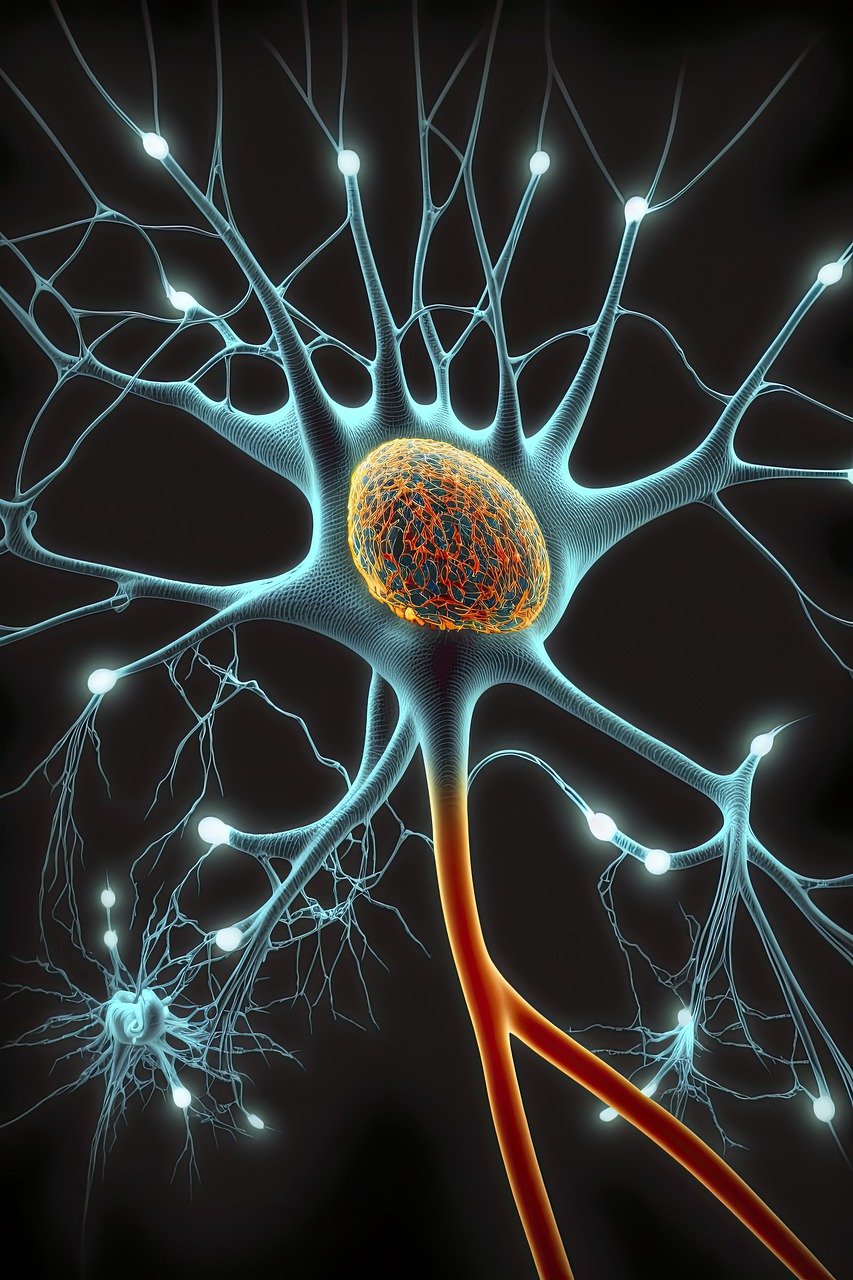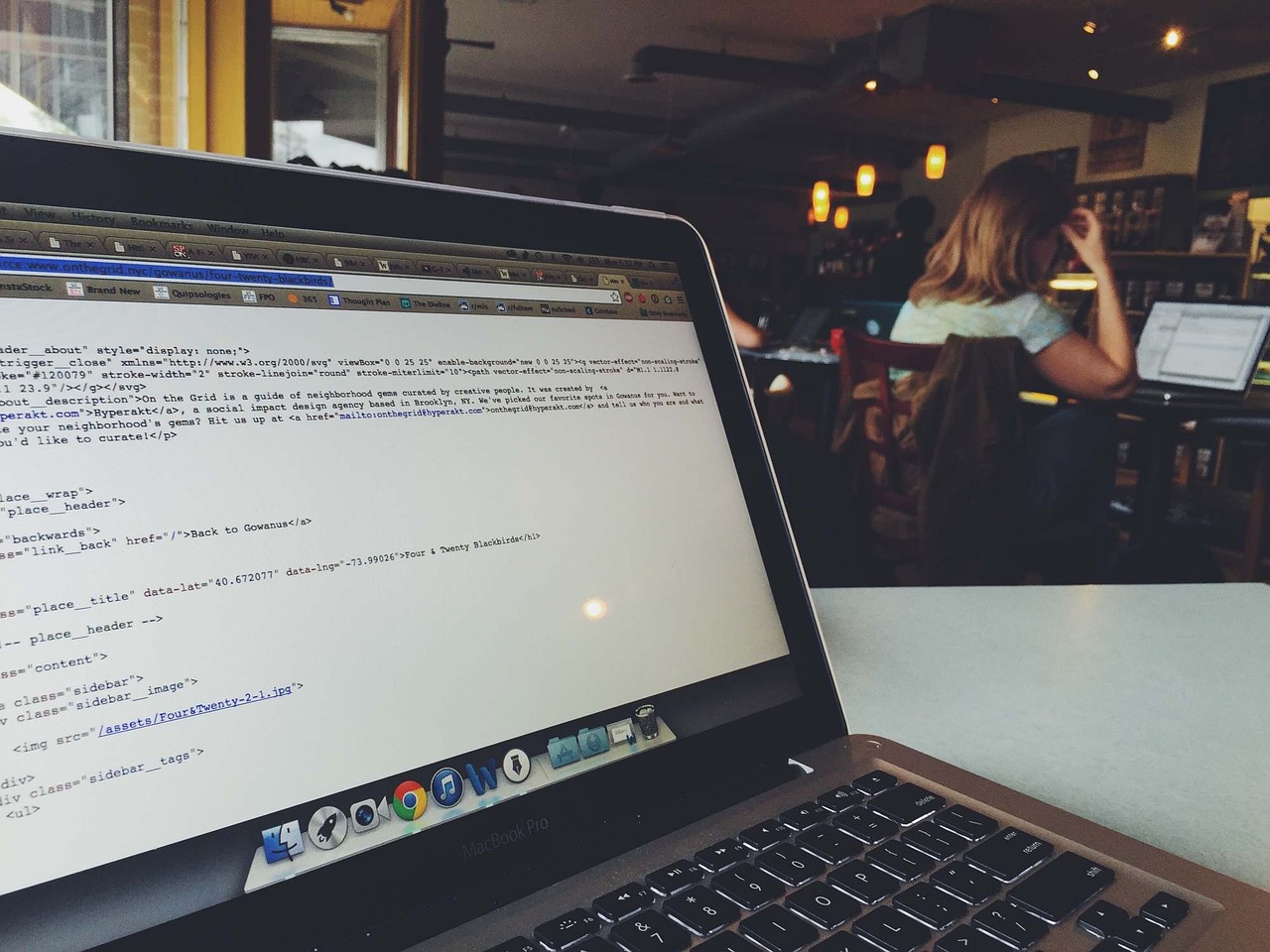In the rapidly advancing world of Artificial Intelligence, Convolutional Neural Networks (CNNs) stand at the forefront of revolutionizing how machines interpret visual data. These powerful neural network models have transformed the field of computer vision, enabling groundbreaking advancements in image recognition and processing. This article delves into the intricacies of CNN architecture, exploring how these networks operate and their significant impact on various AI applications, including object detection and image classification. Whether you’re an AI enthusiast or a professional in the field, understanding CNNs is crucial for leveraging the full potential of deep learning in image analysis and beyond.
Introduction to Convolutional Neural Networks (CNNs)
Convolutional Neural Networks (CNNs) have fundamentally changed the landscape of image recognition and analysis, making significant strides in accuracy and efficiency over traditional methods. CNNs are a specialized class of artificial neural networks designed to process structured grid-like data such as images. Unlike generic neural networks, which treat image data as just another set of numbers, CNNs take advantage of the inherent spatial features present in image data, making them particularly well-suited for tasks involving image processing and pattern recognition.
Introduced by Yann LeCun and his collaborators in the late 1980s, CNNs were initially inspired by the visual processing mechanisms observed in the brain, particularly the work of Hubel and Wiesel on the visual cortex. At their core, CNNs utilize convolutional layers to automatically and adaptively learn spatial hierarchies of features from input images. This means that CNNs can identify low-level features such as edges and textures in the first layers and more complex structures like shapes and objects in deeper layers.
Key to their operation are convolutional layers, which apply a series of convolutional filters to the input image. These filters slide over the image and capture relevant features, an operation that reduces the size of the image without losing essential information. This reduction in dimensionality not only makes the computational process more efficient but also helps to highlight the most salient aspects of the image, which significantly aids in tasks like image classification and object detection.
CNNs also typically include pooling layers, which perform downsampling progressively on the feature maps obtained from convolutional layers. This pooling operation reduces the spatial dimensions of the feature maps, further summarizing the presence of features in specific regions of the input space. Together, these layers enable CNNs to be both translation invariant and scale-invariant, allowing for more robust image recognition regardless of variations in the input.
Training CNNs generally involves large labeled datasets and powerful computational resources, often leveraging GPU acceleration to handle the massive amounts of data and complex operations. Libraries such as TensorFlow and PyTorch offer extensive functionality for designing, training, and deploying CNN models, making it more accessible for practitioners to work on cutting-edge applications.
In summary, CNNs have become the backbone of deep learning for image analysis, thanks to their unique ability to extract high-level features from raw pixel data automatically. Their applications range from facial recognition and autonomous vehicles to medical image analysis and beyond, illustrating their versatility and effectiveness in various domains.
The Core Architecture of CNNs
Convolutional Neural Networks (CNNs) are structurally composed of various types of layers, each playing a crucial role in the network’s ability to process and learn from image data. The core architecture of CNNs typically includes convolutional layers, pooling layers, and fully connected (dense) layers arranged in a sequence. These layers work synergistically to transform the input image into a set of high-level features that can be used for classification or other image analysis tasks.
1. Input Layer:
The input layer of a CNN holds the pixel values of the input image. For example, an image of size 32×32 with three color channels (RGB) will have an input layer of shape (32, 32, 3).
input_image = Input(shape=(32, 32, 3))
2. Convolutional Layers:
Convolutional layers are the heart of CNNs, where the primary feature extraction happens. Filters (or kernels) convolve across the input image to detect features like edges, textures, etc. The result is a feature map, which is then passed to the next layer.
conv_layer = Conv2D(filters=32, kernel_size=(3, 3), activation='relu', input_shape=(32, 32, 3))(input_image)
3. Activation Functions:
These are applied to the feature maps from convolutional layers to introduce non-linearity. Common activation functions include ReLU (Rectified Linear Unit).
activated_layer = Activation('relu')(conv_layer)
4. Pooling Layers:
Pooling layers (such as MaxPooling) reduce the spatial dimensions of the feature maps, which helps in lowering the computational load and controlling overfitting. Pooling usually follows each convolutional layer.
pooled_layer = MaxPooling2D(pool_size=(2, 2))(activated_layer)
5. Fully Connected (Dense) Layers:
After several convolutional and pooling layers, the network typically flattens the 2D arrays into a 1D vector and feeds it into one or more fully connected layers. This process mixes the extracted features together to form the final decision.
flattened = Flatten()(pooled_layer)
dense_layer = Dense(units=128, activation='relu')(flattened)
6. Output Layer:
The output layer’s structure and activation function depend on the type of problem being addressed. For example, in image classification tasks, the output layer might use a softmax activation function for multi-class classification.
output_layer = Dense(units=10, activation='softmax')(dense_layer) # assuming 10 classes
Putting it All Together:
Here’s a quick look at how these layers can be assembled in a sequential model using Keras, a popular Deep Learning library in Python.
from tensorflow.keras.models import Sequential
from tensorflow.keras.layers import Conv2D, MaxPooling2D, Flatten, Dense, Activation
model = Sequential([
Conv2D(32, (3, 3), input_shape=(32, 32, 3)),
Activation('relu'),
MaxPooling2D(pool_size=(2, 2)),
Conv2D(64, (3, 3)),
Activation('relu'),
MaxPooling2D(pool_size=(2, 2)),
Flatten(),
Dense(128),
Activation('relu'),
Dense(10),
Activation('softmax')
])
model.compile(optimizer='adam', loss='categorical_crossentropy', metrics=['accuracy'])
Each component of a CNN architecture plays a pivotal role in transforming the input image to an output class prediction or other relevant tasks in image recognition. Understanding these core building blocks provides a foundation for designing and implementing efficient CNN models for a variety of image processing and computer vision applications. For further details, refer to the TensorFlow documentation and Keras documentation.
Deep Learning Techniques in CNNs for Image Recognition
Deep Learning Techniques in CNNs for Image Recognition
Convolutional Neural Networks (CNNs) have surged to the forefront of image recognition, owing much of their success to deep learning techniques. By leveraging multiple layers of nonlinear operations, CNNs can automatically and adaptively learn spatial hierarchies of features directly from the input images, which is a significant advancement over traditional image processing methods.
Key Deep Learning Techniques in CNNs
1. Data Augmentation
Data augmentation is a crucial technique to enhance the performance of CNNs by artificially enlarging the training dataset. Methods such as random rotations, flips, shifts, and scale variations introduce diversity into the training set, thereby improving the model’s ability to generalize on unseen data. For example, in Keras, data augmentation can be achieved with the ImageDataGenerator class:
from keras.preprocessing.image import ImageDataGenerator
datagen = ImageDataGenerator(
rotation_range=40,
width_shift_range=0.2,
height_shift_range=0.2,
shear_range=0.2,
zoom_range=0.2,
horizontal_flip=True,
fill_mode='nearest'
)
2. Optimizer Algorithms
Optimizer algorithms are pivotal in training CNNs, as they minimize the loss function during training. Stochastic Gradient Descent (SGD) has been a traditional choice, but more advanced optimizers like Adam (Adaptive Moment Estimation) have gained popularity due to their efficiency and performance. The Adam optimizer adjusts the learning rate based on the first and second moments of the gradient, facilitating faster convergence. Here’s an example in PyTorch:
import torch.optim as optim
# Assuming `model` is your neural network model and `learning_rate` is predefined
optimizer = optim.Adam(model.parameters(), lr=learning_rate)
3. Batch Normalization
Batch normalization helps accelerate training and improve the stability of the network by normalizing the inputs of each layer. This technique reduces the internal covariate shift, allowing for higher learning rates and provides some regularization, which can reduce the need for dropout:
from keras.layers import BatchNormalization
model = Sequential()
model.add(Conv2D(32, (3, 3), activation='relu', input_shape=(64, 64, 3)))
model.add(BatchNormalization())
4. Dropout
Dropout is a regularization technique used to prevent overfitting in CNNs by randomly dropping units during training. The dropout rate controls the fraction of neurons that are dropped:
from keras.layers import Dropout
model.add(Dense(512, activation='relu'))
model.add(Dropout(0.5))
5. Advanced Activation Functions
Activation functions play a crucial role in introducing non-linearity into the network. Rectified Linear Unit (ReLU) is widely used due to its simplicity and effectiveness. However, advanced variants such as Leaky ReLU and Parametric ReLU (PReLU) can address issues like dying neurons:
from keras.layers import LeakyReLU
model.add(Conv2D(64, (3, 3)))
model.add(LeakyReLU(alpha=0.1))
Specialized Architectures and Techniques
1. Residual Networks (ResNets)
Residual Networks introduce skip connections or shortcuts to deal with the vanishing gradient problem, enabling the training of much deeper networks. This architecture allows gradient flows directly through these connections, which balances the learning:
from keras.applications import ResNet50
# Load a ResNet50 model pre-trained on ImageNet
model = ResNet50(weights='imagenet')
2. DenseNet
DenseNet connects each layer to every other layer in a feed-forward fashion. Enhanced feature propagation, reduced vanishing gradients, and efficient parameter usage are some benefits of this architecture:
from keras.applications import DenseNet121
# Load a DenseNet model pre-trained on ImageNet
model = DenseNet121(weights='imagenet')
By employing these deep learning techniques, CNNs have significantly improved in their accuracy and efficiency in image recognition tasks, showcasing the profound impact of advanced methodologies in the field of computer vision.
Convolutional Layers: The Building Blocks of CNNs
In Convolutional Neural Networks (CNNs), convolutional layers serve as the foundational components that allow these models to excel at image recognition tasks. Unlike traditional fully connected layers, convolutional layers employ a local receptive field, enabling the model to process small patches of the input image at a time. This approach significantly reduces the number of parameters, leading to more efficient training and improved scalability, especially when dealing with high-dimensional data.
Key Operations in Convolutional Layers
- Convolution Operation: The core operation within a convolutional layer involves convolving an input image with a set of learnable filters, or kernels. These filters slide across the input data to produce feature maps, capturing essential patterns such as edges, textures, and specific shapes. The sliding window mechanism allows the network to maintain spatial hierarchies, meaning that low-level patterns detected in earlier layers can be combined into more complex patterns in subsequent layers.
import tensorflow as tf
from tensorflow.keras.layers import Conv2D
# Example of a convolutional layer in TensorFlow
conv_layer = Conv2D(filters=32, kernel_size=(3, 3), strides=(1, 1),
padding='same', activation='relu')
- Non-Linearity: Following the convolution operation, it is customary to introduce a non-linear activation function, like ReLU (Rectified Linear Unit). This function helps to break linearity, making the network capable of learning more complex representations.
- Pooling (Downsampling): To further reduce the spatial dimensions and the computational load, pooling layers such as MaxPooling or AveragePooling are typically employed after convolutional layers. Pooling operations condense the feature maps by selecting the maximum or average value from regions within each feature map. This step also helps in making the detection of features invariant to spatial translations.
from tensorflow.keras.layers import MaxPooling2D
# Example of a pooling layer
pooling_layer = MaxPooling2D(pool_size=(2, 2), strides=(2, 2), padding='same')
- Normalization: Batch Normalization is frequently utilized to stabilize and accelerate the training process. It normalizes the output of the previous activation layer by adjusting and scaling the activations, effectively reducing internal covariate shift.
from tensorflow.keras.layers import BatchNormalization
# Example of a batch normalization layer
bn_layer = BatchNormalization()
Advantages of Using Convolutional Layers
- Parameter Sharing: The same set of weights (filters) is used for different parts of the input, leading to fewer parameters and reduced risk of overfitting.
- Sparsity of Connections: Each filter interacts with only a small region of the input, reducing computational complexity and allowing networks to go deeper.
- Translation Invariance: Pooling operations, combined with the convolutional approach, ensure that feature detection is less sensitive to object translations in the input space.
Configuring and Fine-Tuning Convolutional Layers
- Filter Size: Typically set to small dimensions (e.g., 3×3, 5×5) to capture fine details while maintaining manageable computational overhead.
- Stride: The step size with which the filter scans across the image; smaller strides provide more detailed feature maps at the cost of higher computational resources.
- Padding: Adds zero-padding around the input to maintain the spatial dimensions, ensuring that the output feature maps are the same size as the input.
Given their ability to reduce dimensionality while preserving essential spatial relationships, convolutional layers remain the linchpin of modern CNN architectures designed for image recognition. For more technical details, you can refer to the TensorFlow documentation on Conv2D.
Transfer Learning and Feature Extraction in Image Analysis
Transfer Learning and Feature Extraction in Image Analysis
Transfer learning has become a game-changer in the field of image analysis, significantly enhancing the efficiency and performance of Convolutional Neural Networks (CNNs). Transfer learning involves taking a pre-trained neural network, typically trained on a large dataset like ImageNet, and fine-tuning it for a specific, and often smaller, dataset. This technique leverages the knowledge obtained from the extensive initial training, allowing the network to generalize better from fewer examples during the fine-tuning phase.
One of the most effective approaches to implement transfer learning is by utilizing architectures such as ResNet, VGG, or Inception. These models, pre-trained on diverse image datasets, have deeply ingrained feature extraction capabilities. For example, a well-known model like ResNet-50 contains 50 convolutional layers trained on millions of images, providing robust feature extraction across a wide range of visual patterns.
To perform transfer learning, one typically freezes the initial layers of the pre-trained model to retain the learned features and re-trains the final layers on the new dataset. This process can be efficiently executed in frameworks like TensorFlow and PyTorch:
In PyTorch:
import torch
import torch.nn as nn
from torchvision import models
# Load Pre-trained ResNet50 Model
model = models.resnet50(pretrained=True)
# Freeze initial layers
for param in model.parameters():
param.requires_grad = False
# Modify the final layer for the new dataset
num_features = model.fc.in_features
model.fc = nn.Linear(num_features, num_classes)
In TensorFlow:
import tensorflow as tf
from tensorflow.keras.applications import ResNet50
# Load Pre-trained ResNet50 Model
base_model = ResNet50(weights='imagenet', include_top=False, input_shape=(224, 224, 3))
# Freeze initial layers
base_model.trainable = False
# Add new classifier layers
model = tf.keras.models.Sequential([
base_model,
tf.keras.layers.GlobalAveragePooling2D(),
tf.keras.layers.Dense(num_classes, activation='softmax')
])
Feature extraction, as part of transfer learning, plays a vital role in image analysis. It focuses on the high-level features that older, well pre-trained layers can extract from images. These features may include edges, textures, shapes, or more complex structures. The process involves retaining these feature representations and leveraging them to train a new classifier layer or layers tailored to the new task. This method provides a head start and speeds up learning since the model doesn’t need to start from scratch.
Moreover, the combination of transfer learning and feature extraction can lead to faster convergence and improved accuracy, even with limited data. Fine-tuning only the higher (more specialized) layers of the network means fewer parameters are being adjusted, reducing the risk of overfitting while still adapting the model to the specific requirements of the new dataset.
The benefits of these techniques are well-documented in TensorFlow’s documentation on Transfer Learning and Fine-Tuning and PyTorch’s tutorial on Transfer Learning for Computer Vision. Both resources provide comprehensive guides and examples to help integrate these powerful methods into your own image analysis projects.
Transfer learning and feature extraction are pivotal in maximizing the potential of CNNs in image analysis, enabling the development of highly accurate and efficient models even with constrained datasets.
Applications of CNNs in Object Detection and Image Classification
One of the most transformative applications of Convolutional Neural Networks (CNNs) lies in the domains of Object Detection and Image Classification. These domains leverage the ability of CNNs to autonomously learn and identify intricate patterns in visual data, thereby driving advancements in numerous practical applications.
Object Detection
Object detection is a complex task that involves not only classifying objects within an image but also specifying the location of each object using bounding boxes. CNNs tackle this problem effectively, often acting as the backbone of popular object detection frameworks like Faster R-CNN, YOLO (You Only Look Once), and SSD (Single Shot MultiBox Detector).
- Faster R-CNN integrates CNNs with region proposal networks (RPNs) to enhance the detection pipeline. The RPN generates potential bounding boxes, which are then classified and refined by the CNN.
import torch import torchvision from torchvision.models.detection import fasterrcnn_resnet50_fpn # Load Faster R-CNN with a ResNet-50-FPN backbone model = fasterrcnn_resnet50_fpn(pretrained=True) model.eval() - YOLO achieves real-time object detection by dividing the image into a grid and predicting bounding boxes, confidence scores, and class probabilities simultaneously for each grid cell. This reduces the computation time significantly.
from yolov3.yolov3 import get_yolo_model # Load YOLO v3 pretrained model model = get_yolo_model() model.eval() - SSD utilizes anchor boxes of different aspect ratios and scales to detect objects. The model operates in a single stage, using a single neural network to both locate and classify objects, which provides a balance between speed and accuracy.
import ssd model = ssd.build_ssd('test') # Initialize SSD model with pre-trained weights model.eval()
Image Classification
Image classification assigns a label or category to an entire image based on the identified features, which CNNs excel at due to their hierarchical feature-learning capabilities.
- Classic CNN architectures such as AlexNet, VGGNet, and ResNet have set benchmarks in the image classification domain. For instance, ResNet-50 introduced the concept of residual learning, which mitigated the vanishing gradient problem and enabled deeper networks.
from torchvision import models # Load a pretrained ResNet-50 model for image classification model = models.resnet50(pretrained=True) model.eval() - MobileNet emphasizes lightweight architecture, making it suitable for mobile and embedded vision applications without compromising accuracy. It employs depth-wise separable convolutions to reduce the number of parameters.
def load_mobilenet_model(): mobilenet_v2 = models.mobilenet_v2(pretrained=True) mobilenet_v2.eval() return mobilenet_v2 model = load_mobilenet_model() - EfficientNet scales parameters systematically across all dimensions of the model, achieving higher performance with fewer resources.
import efficientnet_pytorch # Load EfficientNet model model = efficientnet_pytorch.EfficientNet.from_pretrained('efficientnet-b0') model.eval()
These CNN-based advancements in object detection and image classification have far-reaching impacts on industries such as healthcare (e.g., medical imaging), automotive (e.g., autonomous driving), retail (e.g., inventory management), and many more. For further reading, refer to the comprehensive documentation and tutorials available on the official websites of popular libraries like PyTorch and TensorFlow.
By leveraging CNN-based models, organizations can enhance the accuracy and efficiency of image analysis tasks, identify and mitigate errors, and transform raw data into actionable insights.
The Future of CNNs and Artificial Intelligence in Imaging
In the ever-evolving domain of Artificial Intelligence, Convolutional Neural Networks (CNNs) continue to push the boundaries of what’s possible in image recognition and analysis. Looking ahead, several emergent trends are poised to shape the future of CNNs and their applications in imaging.
One of the most promising developments lies in the integration of generative models with CNNs. Techniques such as Generative Adversarial Networks (GANs) can be combined with CNN architectures to enhance the quality of image synthesis and reconstruction. These hybrid models are incredibly effective in fields like medical imaging, where high-quality image restoration is crucial for accurate diagnoses.
Moreover, the implementation of self-supervised learning is gaining traction. In self-supervised learning, CNNs learn to recognize patterns and features in images without requiring extensive labeled datasets. This approach reduces the dependency on manual data annotation, making it cost-effective and scalable. Facebook’s SEER (Self-supervised Egocentric Photo Data) project showcases how large-scale, self-supervised models can achieve state-of-the-art image recognition results using unlabeled data.
Another critical advancement is the advent of quantum CNNs. With the progression of quantum computing, researchers are exploring the application of quantum algorithms to CNN architectures. Quantum CNNs can potentially perform image recognition tasks exponentially faster than classical networks, opening new frontiers in AI performance and scalability.
The application of CNNs in edge computing is another transformative development. As devices ranging from smartphones to IoT sensors become more powerful, there is a growing trend of deploying CNNs directly on edge devices. This reduces latency and enhances real-time image processing capabilities. Frameworks like TensorFlow Lite and PyTorch Mobile facilitate such deployments, enabling efficient CNN-based image analysis on resource-constrained devices.
Explainable AI (XAI) is also significantly influencing the future of CNNs. As CNNs are often criticized for their “black box” nature, explainability becomes crucial, especially in high-stakes environments like healthcare and autonomous driving. Techniques such as Layer-wise Relevance Propagation (LRP) and Grad-CAM (Gradient-weighted Class Activation Mapping) are being employed to make CNN decisions interpretable, increasing trust and adoption in critical sectors.
Finally, the ongoing refinement of transfer learning methodologies will further expand the applicability of CNNs across various domains. Transfer learning allows pre-trained CNN models to be fine-tuned to specific tasks with relatively small datasets. This approach accelerates the development of effective image recognition models across fields like agriculture, security, and commerce, democratizing access to advanced AI capabilities.
In summary, the future of CNNs in imaging is bright and full of innovative potential. With advancements in generative models, self-supervised learning, quantum computing, edge deployments, explainable AI, and transfer learning, CNNs are set to revolutionize how we interact with and interpret visual data. For those interested in a deep dive, the official TensorFlow, PyTorch, and OpenAI documentation provide valuable insights and resources.




